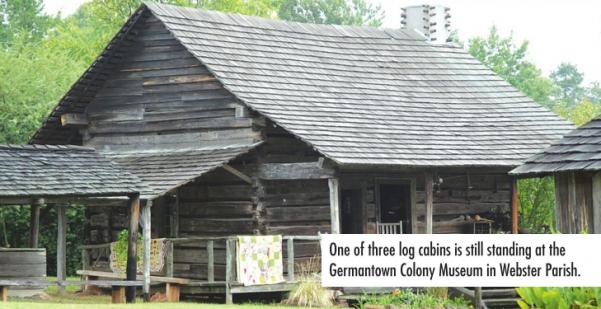
Germantown opens to public after years in the making
Germantown Colony State Museum and Visitor’s Center’s grand opening marked the end of a journey that may have mirrored the travels of the German settlers who first came to the site in 1835.
Local and state dignitaries traveled Oct. 6 to the site north of Minden to honor ancestors and those who have worked so hard to preserve the history of the colony. Secretary of State Tom Schedler said he wondered if the opening day would ever come.
“We’ve got to protect sites like this,” Schedler said. “I have German ancestry, myself, but these folks that came here long before us were the ones that had the really tough road.”
Schedler was elected secretary of state shortly after the state took over responsibility for the museum from the Webster Parish Police Jury.
“Tom Schedler is a champion of the Germantown Colony,” Lynn Dorsey, executive director of Webster Parish Convention and Visitors Commission, said. “He has worked diligently during his term to protect our state’s heritage and history, despite budget cuts.”
The legislative act to build the new visitor’s center was passed in 2008; however, after many false starts and budget cuts, the project was not awarded until 2013. Total budget was $519,420. The project was awarded to KAN Construction with a bid of $424,000.
Larry Milford, hired by the state designed, built and installed display cases, wall hangings and just about everything else to make the new building a showcase. Former state Rep. Jean Doerge is curator of the museum, located five miles north of the intersection of Germantown Road and Country Club Circle. She began work in May, but she is certainly no stranger to the one-acre historical center.
“I was in the legislature when we got the money to build the visitor’s center.” Once the money became available, “We needed someone to try to bring it all together and I thought I’d see what I could do to help,” she said. Doerge represented the parish in the Louisiana legislature from 1998 to 2012.
The exhibits in the new visitor’s center and museum give a better understanding of how the settlement came to be and how the members of the commune conducted their lives.
At the door of the museum is a mannequin representing Countess de Leon, wearing a bonnet and homespun clothes, with a hoe resting on her shoulder. “This shows that she worked; she didn’t sit around with a crown on her head,” Doerge said.
Germantown was a utopian colony founded in 1835 by a breakaway sect of the Harmony Society. Followers of the self-proclaimed Count de Leon left Pennsylvania and started down the Ohio River, the Mississippi and the Red, seeking to establish a home at the same latitude of Jerusalem. They settled at Grand Ecore where the count died during the yellow fever epidemic in 1834. The next year the settlers, led by the countess, gravitated to the present Germantown site.
Standing on the back porch of the visitor’s center, one can see the entire offerings: the countess’ home, the communal kitchen and Goentgen’s cottage, all original, and the reconstructed blacksmith shop, and smokehouse. Many of the furnishings and other possessions of the colonists have been lost over time or sold, but the buildings give a good idea of how life was lived. A number of out buildings could not be saved. “Three buildings are original,” descendant Susie Lester said. “These buildings are my favorite part of the museum. After a long journey from Germany to Pennsylvania and finally to the north woods of Louisiana, the colony began their work to create these beautiful log cabins.”
“There had been 30-plus buildings there,” Milford said. “There were sheep, oxen and cow barns, a thread gin (silk house), and a general store, among others. There was bachelor’s quarters and houses for storing brandy, potatoes, jam and jelly.” Germantown, he said, was “almost like a commune. You could go and get what you needed.”
Age is taking its toll and it’s a constant fight: preservation versus cost. “To think we have preserved this. This is the only place in Louisiana where we have so much history of the German people when they came to Louisiana,” Doerge said.
–Bonnie Culverhouse